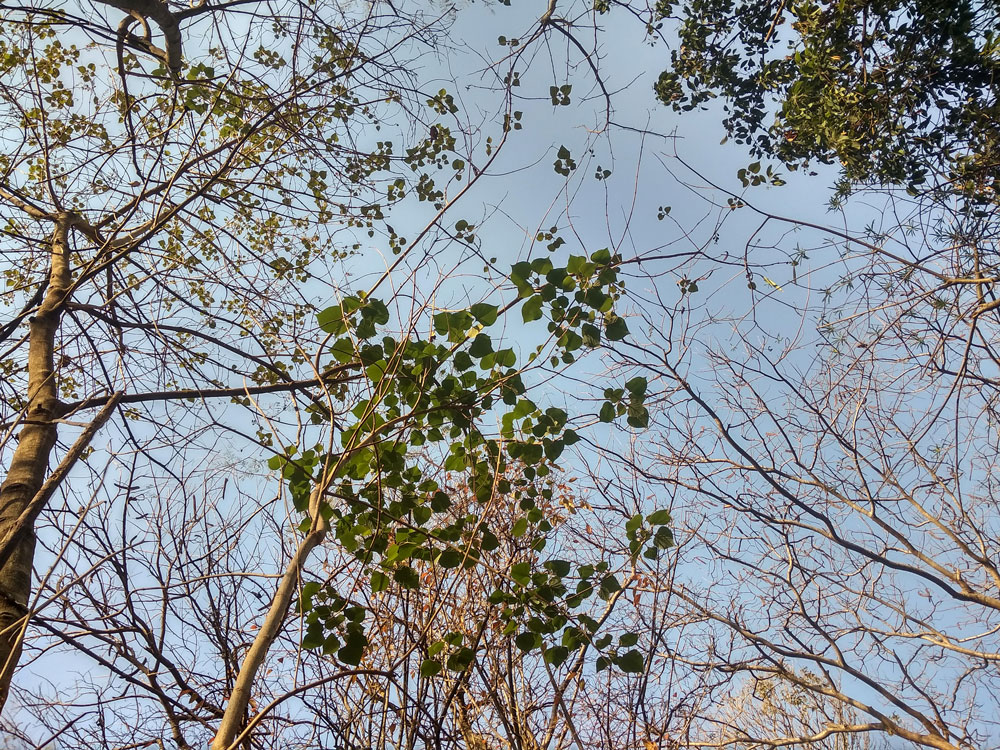Gumbar - White Teak Tree

Gmelina arborea
Summary
Scientific Classification
Kingdom: Plantae
Division: Angiosperm
Class: Dicotyledonae
Order: Lamiales
Family: Lamiaceae
Genus: Gmelina
Species: G.arborea
Scientific Name: Gmelina arborea Roxb. ex Sm.
Common Names:
English: White teak, Cashmeri teak, Coomb teak, Candahar tree, Cashmere Tree, Kambari, Gamari, White Kashmir Teak.
Hindi: Bhadraparni, Gumbar or Gamhar.
Kannada: Kumbudi, Kaashmiri Mara, Shivanimara, Shivani, Shivanemara.
Marathi: Shivan, Shewan Thorshivani.
Description:
- Habit & Habitat: Gmelina arborea is an unarmed, moderately sized to large deciduous tree with a straight trunk. It is wide spreading with numerous branches forming a large shady crown, attains a height of 30 m or more and a diameter of up to 4.5 m.Occurs in a variety of forest habitats, including tropical semi-evergreen, sub-montane, very moist teak forests, deciduous, sal and dry teak forests.It also occurs in Syzygium parkland and low alluvial savannah woodland.
- Distribution: Gmelina arborea is native from Pakistan south to Sri Lanka and east to Myanmar, Thailand, Vietnam and southern China. It is extensively planted as a fast-growing tree in tropical areas of Africa, Asia and America.
- Morphology:
Leaf: Large, broadly ovate, acuminate, cordate at base, hairy below.
Inflorescence: Inflorescence consisting of cymes arranged in a terminal or axillary panicle up to 40 cm long.
Flower: Flowers bisexual, zygomorphic, 5-merous; calyx broadly campanulate, c. 5 mm long, densely hairy, with small triangular teeth; yellow-brown to orange, tube funnel-shaped, widened near apex, 2-lipped, upper lip 2-lobed, lower lip 3-lobed.
Androecium: stamens 4, 2 long and 2 short, inserted at the base of the corolla tube.
Gynoecium: ovary superior, ovoid, 4-celled, style slender, stigma 2-lobed with unequal lobes.
Fruit: Fruit a globose to obovoid, fleshy drupe 2–3.5 cm long, glossy and yellow when ripe, seated on the accrescent calyx, 1–4 seeded.
Seed: oblong to lens-shaped, without endosperm.
Fruiting season: April—June.
Flowering season: February—March. - Propagation: Through seed.
- Importance:
Root of Gmelina arborea is an ingredient of the “Dasamula”.It promotes digestive power and improves memory. The timber is very hard and used for furniture work. An infusion of the root increases the flow of milk in woman. Roots are given with other drugs in gout, leprosy and eczema. Juice of the leaves is given in diabetes. - Location: Botanical Garden.
 Trees of GSS Project supported by Makerspace Belgaum Website concept and designe by
Trees of GSS Project supported by Makerspace Belgaum Website concept and designe by